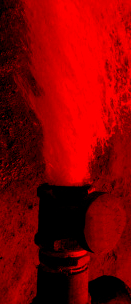Small town spills could bring flow-on damage
 The Australian Defence Force (ADF) is investigating potential groundwater contamination from a fire-fighting chemical it used for over thirty years.
The Australian Defence Force (ADF) is investigating potential groundwater contamination from a fire-fighting chemical it used for over thirty years.
Fire-suppressing foam containing perfluorooctane sulphonate and perfluorooctanoic acid were used at the Oakey Army Aviation Centre base in Queensland from 1970 to 2005, primarily for safety training exercises.
The ADF changed fluids when the safety of the existing substances came into question.
But recent water samples from bores on farms surrounding the base have revealed that the contamination further than Defence had imagined, leasing chemicals to be found in Oakey Creek and sensitive aquifers.
The Department of Defence called an emergency meeting last night in Oakey to keep residents informed, but many left not knowing very much more.
A land contamination specialist was brought in to explain the studies and potential effects of the chemicals.
Specialist Paul McCabe told residents that it was hard to give a proper answer,
“How much do we know about the inter-connectivity, the nature and extent of the aquifer, the relationship with the existing bores? Very little to nothing, at the moment,” Mr McCabe said.
He said the chemicals were notoriously durable, and it could be several more decades before they break down naturally.
However, research is unclear as to whether the chemicals actually pose any threat to humans, though some tests have suggested a link to tumour growth in rat livers.
The uncertainty was not well received by locals, some of whom continue to fish, farms and even bathe in potentially tainted water.
Local man Craig Commens said he has relied on rainwater and bore water for his family and property, and has demanded compensation.
“It's black and white. I don't use town water now. If the army's stuff-up is causing us to have to use the town water, they should pay,” he said.
Residents have also raised concerns about the damage to property values.
Testing of all bores near Oakey and expanded groundwater checks will continue, seeking to discover the full scope of the contamination.







 Print
Print